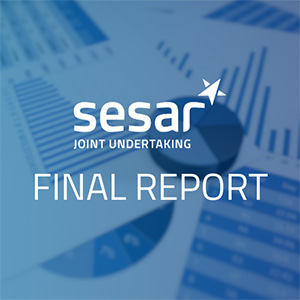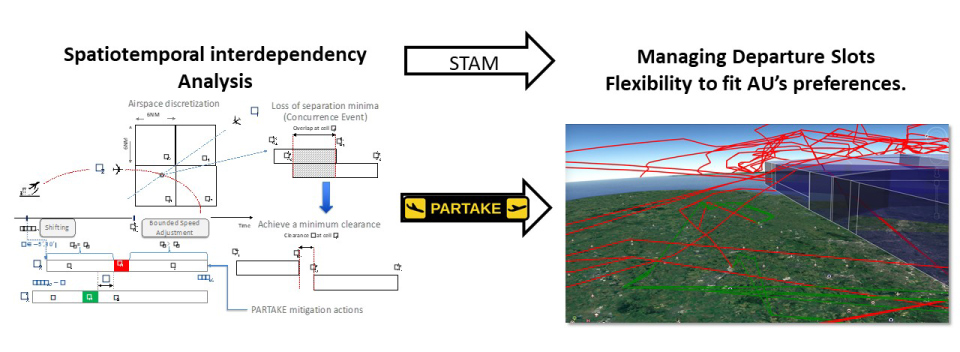Partaking in better decison making in aviation
Despite the availabilty of a huge amount of (real-time and forecast) data about airports, aircraft, airspace, no tools exist today that can analyze time-space interdependencies between these elements. The PARTAKE project has developed a decision support system to prioritise the departure of aircraft, taking into account information from the airport (on taxiways and runways status), as well as from the airspace users on their preferences and the aircraft, including its trajectory. With this data, the system can identify areas of airspace where the demand is higher than capacity. In doing so, action can be taken to delay departures or expand the separation between aircraft in congested traffic areas. More specifically, the research paves the way for new innovations in several areas:
- Advanced tactical capacity management: Design of new operational metrics to predict traffic behaviour and implement more efficient resources allocation mechanisms.
- Dynamic capacity balancing (DCB): A short term ATFCM measures (STAM) fine tuning algorithm to compute the departure time without affecting the ATFCM pre-flight assignments.
- Optimised airspace user operations: Analysis of available airspace to fit with a new conflict free trajectory considering both: aircraft on the ground waiting for clearance and aircraft in flight.
The project tested the tool using traffic data (air and ground) from London’s terminal manouevring area. It showed the tool helped to minimise the number of conflicts and the need for tactical capacity management measures. With that, the tool has the potential to improve punctuality while lowering fuel consumption and emissions.
Benefits
- Short-term ATFCM measures
- Advanced ATM Metrics
- Measurable hotspot detection
- ATM digitalisation
- Integration of micro and macro level dynamics
- Mitigation of downstream effects
- Multi-stakeholder transparency




